Plastic buttons in the 1940-50s
As noted on the ’WW2 Onwards’ page; for several years from 1948 articles appeared in newspapers around the country about inferior plastic buttons that were not able to be dry-cleaned, and could damage clothes. As these articles were often linked to promotion of the dry-cleaning trade and also to local button production, I wondered if this was more a ‘beat-up’ than factual. However, it appears that in the post war period, polystyrene buttons had proved disappointing and had been banned by the American Drycleaners in 1947. In that year G. Herring promoted their buttons as boil, iron and dry-clean proof. (General Plastics did not advertise this until 1954, although drycleaning was mentioned on the back of their button cards. G. Herring always seemed to be ahead of its main rival when it came to advertising.)
Excerpts from a larger article in The Argus, 8th June 1954, page 24, are below:
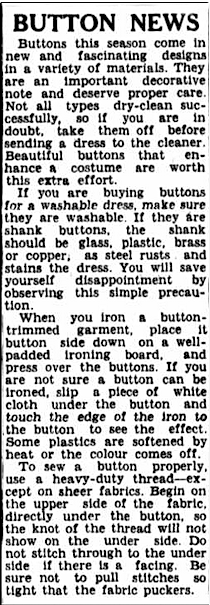
Queensland Times, 26th January 1948 page 4.
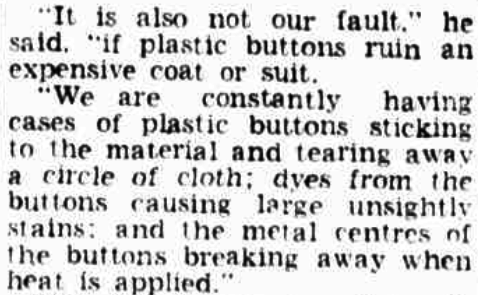
The Argus, 24th August 1950 page 9.
Excerpts from a larger article in The Argus, 8th June 1954, page 24 are below:
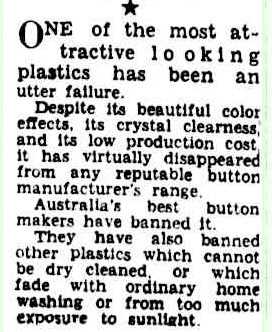
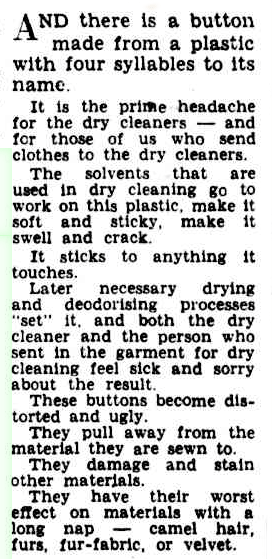
For some reason they were too coy to name polystyrene. The article stated that the local dry-cleaners had been warned by their American counterparts c.1920 about this type of plastic (this was an error, as polystyrene wasn’t manufactured until around 1931) and in 1947 America had ceasing production of these buttons. Another article was not so coy:
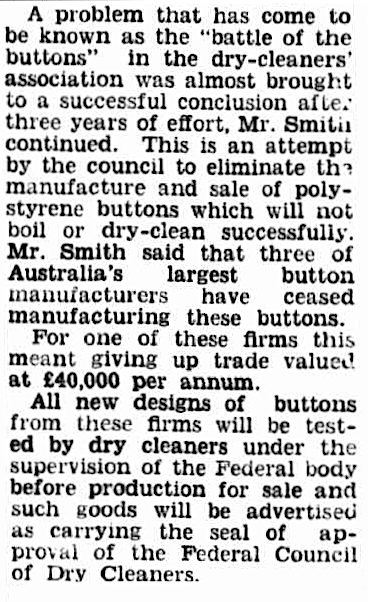
South Western Times, 2nd September 1954 page 7. Mr Smith was a West Australian dry-cleaner who had attended a national conference where “the button issue” was discussed.
I guess that two of the three of “Australia’s largest button manufacturers” were General Plastics Ltdand G. Herring Pty Ltd, but who did Mr Smith consider was the third?
For all comments or questions, please use the Contact page.
